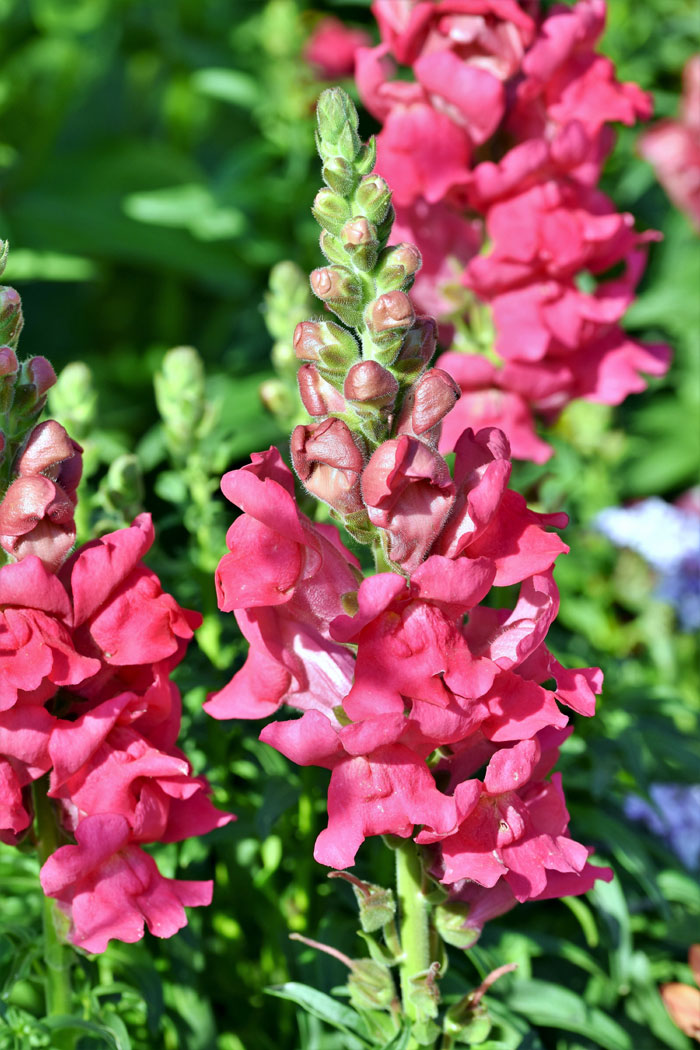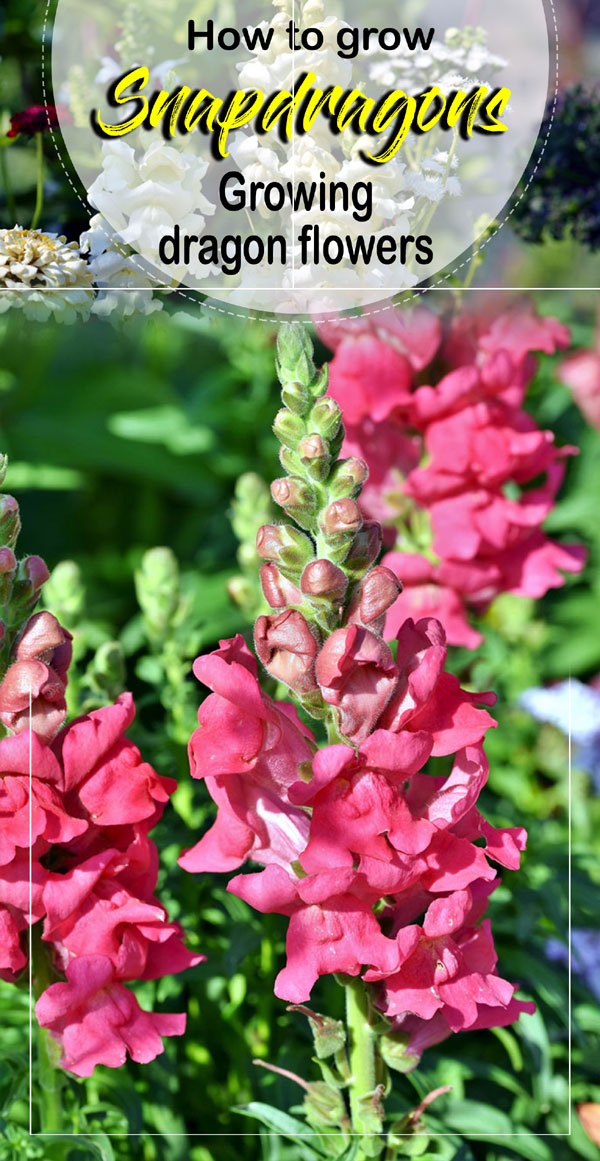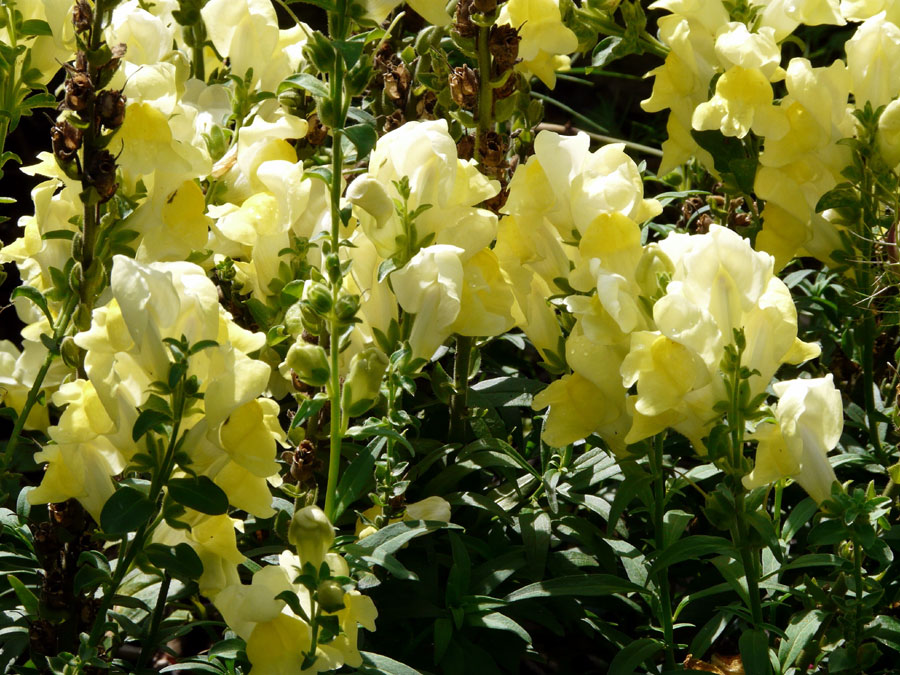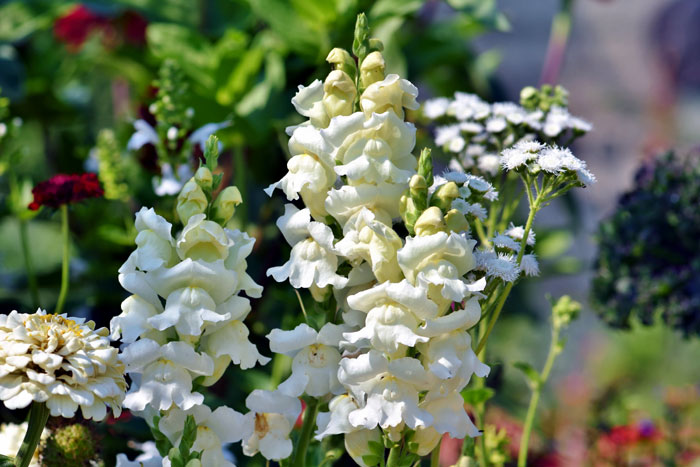Snapdragons Plant (Antirrhinum)
Known as dragon flowers or snapdragons, the antirrhinum genus comprises several species that are characterized by resembling the face of a dragon as the flowers open and close when squeezed laterally. Their natural habitat is the rocky regions of Europe, the United States, Canada, and North Africa. Snapdragons are available in a wide array of sizes and types, ranging from a few inches to spires over 4 feet tall. Dragon flowers plants come in big or small varieties. know Growing habit of Snapdragons Plant and Snapdragons care in this article.
The seeds have also been used to extract oil from the plants, particularly in Russia, while the leaves and flowers have also been considered to contain anti-inflammatory properties and have been used in poultices.

Overview Snapdragons Plant
Scientific name Antirrhinum
Common name Snapdragon, dragon flowers, dog’s mouth, lion’s mouth.
Plant type Herbaceous, perennial plant
Sun Full sun, part shade
Soil Well-drained, rich soil
Soil pH 6.2-7.0
Flower colors Pink, Violet, Red, Orange, White, yellow and purple.
Blooming time Spring to fall
Zone 7-11
How to Grow and Care Snapdragons Plant
Snapdragons bloom profusely in cool weather in intensely saturated colors, and they are true highlights in either a spring or fall garden. A long period of blooming occurs because the flowers begin to bloom at the bottom of the stalk and then work their way up. If you water snapdragons regularly, they will keep blooming through the fall, even if they slow down in the heat of mid-summer.
Growing from seeds
Snapdragons can take two to three months from seed germination to blooming, so they are often started indoors months before the last frost of winter. In milder climates, it is possible to winter-sow snapdragons by simply tossing the seed over the garden soil in late fall. In the garden, they can also be sown directly a few weeks before the last frost is expected. Once seedlings have reached about six true leaves, pinch their tops off, which will cause their stems to branch out and become bushy. You can transplant snapdragons outside a few weeks before the last frost.
Growing from cuttings
Take a 2-inch piece of a healthy parent plant’s stem just below a leaf node. To root a cutting, remove the lower leaves and dip the bottom into rooting hormone. Cover the pot with a plastic bag or dome to keep the cutting humid when you put the cutting in seed starter mix or potting soil. As soon as the roots begin to grow, you can remove the cover and continue growing in a bright window or with artificial light.
Sunlight
Make sure that the location you choose gets at least six hours of direct sunlight per day, as snapdragons prefer full sun. In part shade and with plenty of water, they will likely thrive throughout the summer and bloom again in the fall.
Soil
Ideally, snapdragons will do best in soils with plenty of organic matter and a pH level of between 6.2 and 7.0. Adding well-aged compost to the topsoil can help improve the soil’s conditions if it has excessive sand or clay. As a result, the soil structure and drainage are enhanced, allowing for better nutrient and moisture retention.
Watering
Watering snapdragons properly is essential. Soak the seedlings in water for a few days. It only needs about an inch of water per week after the snapdragon is established and there is no rain. Keep your snapdragon healthy by watering near the crown of the plant and avoiding overhead watering.
Temperature and Humidity
It is quite easy for them to handle a light frost, which is 28 to 32 degrees Fahrenheit. Some of them might even be able to withstand a hard freeze at 28 degrees Fahrenheit.
In order to grow snapdragons, the relative humidity level in the room should be around 40%. You can easily increase the humidity in your snapdragon’s environment if the air is dry.
Fertilizer
Feed the plants with fertilizer when they first start flowering. Using a general-purpose liquid fertilizer every six weeks or once a month is enough to keep your snapdragons healthy. It is particularly important during the blooming season. The typical rate of fertilizer for a flowerbed is three pounds for every 100 square feet, or one pound for every ten square feet of the flowerbed. It is important to water the plants well to reduce the risk of nitrogen burns and to help the fertilizer reach the roots.
Pruning
Snapdragons will benefit from pruning in terms of growth and vigor. Trim the plants periodically to reduce dead foliage. The dead foliage should be pruned back roughly 1/4 inch from the nearest healthy bud, stem, or set of leaves. At the end of the first blooming period, trim the plant by one-third to two-thirds of its height, leaving about six leaf nodes visible above soil level.
Read also:
How to grow and care for statice-flowers. Growing and care of kalanchoe plants. Organic Cherry tomatoes growing and care tips. How to grow Sugarcane plants. Calibrachoa (million bells) growing and care guide. Sedum plants (stonecrop) growing, planting, and care tips. Growing Vanilla beans in your garden. How to grow kale at home. Viburnums opulus growing and care tips. How to Grow Bird of Paradise plant.
For pin:






